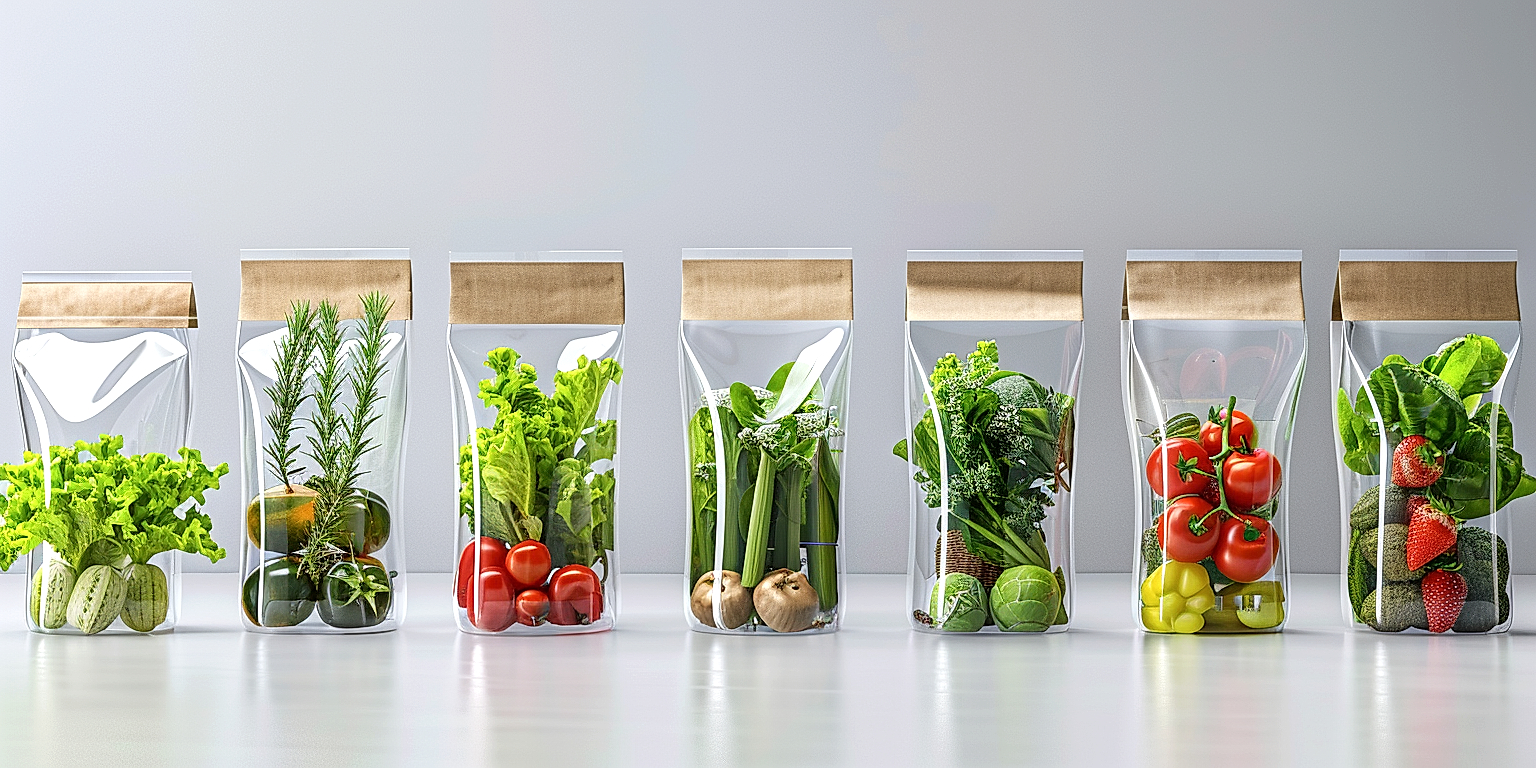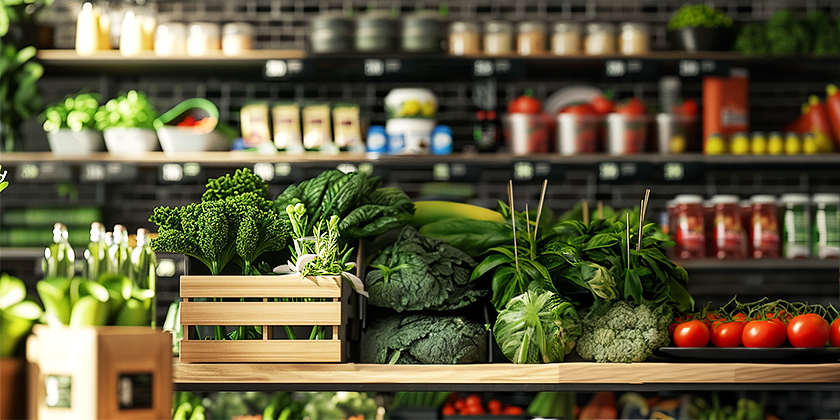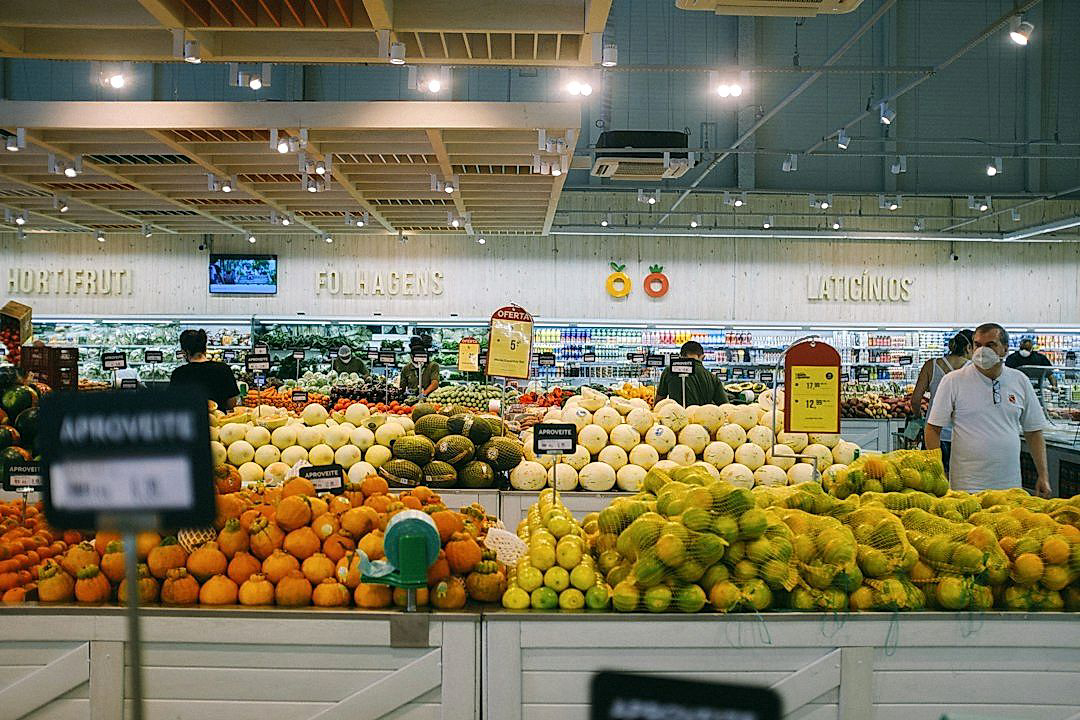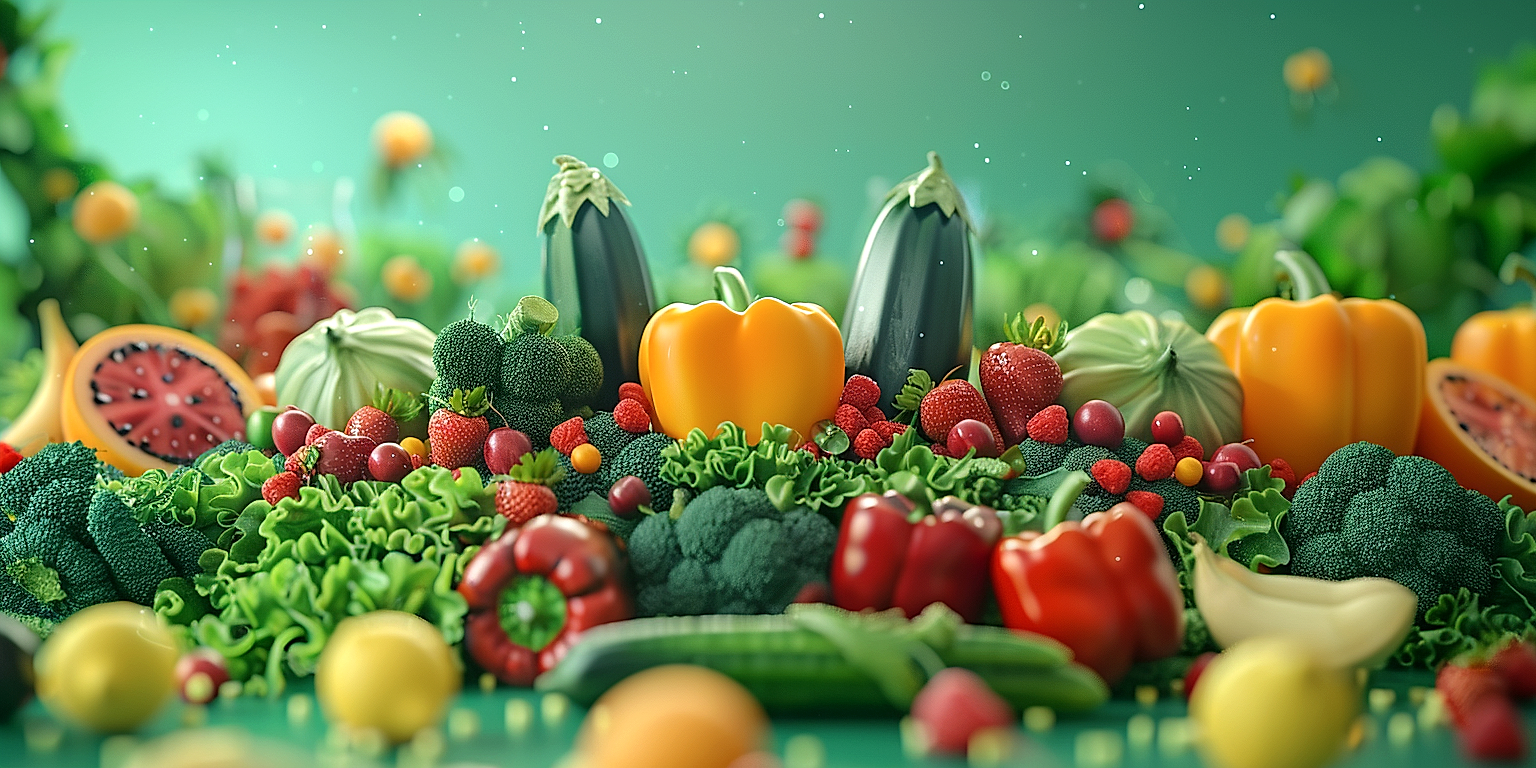In the highly competitive sector of retail, innovation and creativity serve as catalysts to capture consumers’ attention.
One key area often overlooked is the evolving landscape of packaging design, particularly in the realm of fresh produce.
This vital component not only safeguards food quality but elevates the overall shopping experience and drives customer purchase decisions.
Recent trends focus on minimalistic design, sustainability, and interactive elements, all working in conjunction to revolutionize the retail sector.
The transition from conventional packaging to conscious, customer-centric design has set a new precedent.
This article aims to shed light on these transformative packaging trends currently dominating the produce sector in retail.
Contents
Packaging Designs Taking Over Produce Retail
1. Eco-friendly, compostable packaging
In the realm of produce retail, one major shift has been the adoption of eco-friendly, compostable packaging.
As sustainability continues to become a more dominant topic, companies large and small are adapting to the times and working towards reducing their impact on the environment.
By opting for biodegradable options over traditional plastic and other non-renewable materials, they’re making a considerable difference.
In an industry so heavily reliant on packaging, small changes like these can have a vast collective impact on the environment.
These eco-friendly packaging designs result from a combination of consumer demand and progressive company values.
Consumers are becoming more aware of their role in waste production, and are increasingly making purchases based on a brand’s sustainability initiatives.
On the other hand, companies are realizing the positive impact of sustainability not only on the planet but also on their brand image and bottom line.
When it comes to compostable packaging in produce retail, it can take various forms.
These include bio-plastic bags made from plants, molded pulp containers, or even edible packaging made from seaweed extracts.
Many of these eco-friendly packaging materials can be composted at home, providing a convenient solution for consumers and reducing the strain on landfill capacities.
Notably, compostable packaging is not just limited to bags and containers.
Stickers that indicate the produce’s price and origin are also being made with compostable materials, further reducing the waste produced in this industry.
The use of compostable packaging in the produce retail space is not just about being trendy, but providing practical and beneficial solutions with long-term effect.
Importantly, these sustainable changes are also creating a shift in consumer behavior, promoting more eco-friendly shopping habits.
While the rise of compostable packaging is promising, it does come with challenges.
One of the more significant issues being that composting infrastructure varies greatly from region to region.
Despite these challenges, the move towards eco-friendly, compostable packaging is an essential step for the produce retail industry moving forward.
2. Reusable Produce Bags
One emerging trend in produce retail is the increasing use of reusable produce bags.
This type of packaging not only reduces the impact on the environment, but also provides consumers with a convenient and sustainable alternative to single-use plastic bags.
These bags typically made of materials such as cotton, jute, or recycled plastic, are durable and designed for multiple uses.
They often feature drawstring tops for easy opening and closure, providing convenience to shoppers while ensuring the produce remains secure and fresh.
Interestingly, reusable produce bags also have the advantage of being washable, which means they can easily be kept clean and hygienic, contributing to food safety.
Many retailers are now encouraging customers to bring their reusable bags when shopping by offering incentives or discounts.
Procuring reusable produce bags is a move that aligns with consumers’ growing desire for more environmentally friendly and sustainable shopping practices.
This is a testament to the fact that more individuals and businesses are realizing the importance of reducing waste and the role packaging design can play in this respect.
Overall, the adoption of reusable produce bags is not only good for the environment but can also enhance the customer’s shopping experience.
For instance, purchasing from a retailer that promotes environmental consciousness by offering reusable produce bags might give customers a sense of satisfaction and alignment with their personal ethos.
In terms of design, these bags can be customized to reflect a retailer’s brand identity and communicate their commitment to sustainability.
Beyond their environmental benefits, reusable produce bags present a great branding opportunity for retail businesses.
The ability to print logos and other info directly onto the bags not only reinforces brand recognition but also subjects for consumers to identify and connect with the brand’s values.
This underlines how packaging designs, such as reusable produce bags, can serve multiple purposes beyond their primary function of containing and protecting the product.
In the case of reusable produce bags, they serve as a tangible representation of a retailer’s commitment to sustainability, while providing consumers with a durable, practical, and environmentally friendly way to transport their fresh produce home.
3. Transparent, Windowed Packaging
From a retail perspective, transparent, windowed packaging is gaining traction due to its multiple advantages.
Firstly, this approach provides authenticity and honesty to consumers.
This is because they can potentially see and evaluate the quality of the product without having to open the package.
Transparent, windowed packaging eliminates the guesswork associated with traditional opaque packages.
This packaging design therefore plays a fundamental role in building customer trust.
Essentially, windowed packaging becomes an implicit guarantee of product quality, which further influences the buying decision of a customer significantly.
Naturally, such transparent packaging allows consumers to make more informed decisions at the point of purchase.
However, beyond mere transparency, windowed packaging also offers significant branding opportunities.
In fact, it allows for creative designs that can further boost product attractiveness, set it apart from competitors, and enhance its overall shelf appeal.
For food produce, this packaging method ensures that the freshness and color of the items are clearly visible to the consumers.
In addition, transparent, windowed packaging not only aids in visibility, but it can also reduce food wastage.
Customers can better assess the quantity they require and make purchases accordingly.
In essence, the transparency in packaging aims to maintain responsibility in the consumption process.
Notably, the design of windowed packaging can accommodate various materials, including plastic, glass, and the ever-popular eco-friendly alternatives like bioplastics and compostable materials.
This adaptability gives retailers the flexibility to choose the most suitable option for their product range.
Correspondingly, it gives customers the power to make conscious and responsible purchases, contributing to a sustainable environment.
Conclusively, it is safe to say, transparent, windowed packaging benefits not just the consumers and retailers but the environment too.
4. Plastic-free, Cardboard Containers
As the world continues to prioritize sustainability, plastic-free, cardboard containers are becoming increasingly prevalent in the produce retail sector.
This type of packaging is significantly more sustainable compared to its plastic counterparts.
It is made from renewable resources such as wood pulp and is in large part, recyclable.
Moreover, aside from environmental sustainability, the use of cardboard adds aesthetic appeal to the product.
Made to be sturdy and durable, these packages adequately protect the produce from manhandling and harsh environmental conditions during transportation.
Despite the popular misconception, cardboard containers do not compromise on the factor of convenience.
Their lightweight design and the ease with which they can be folded, stacked, and disposed of make them particularly suitable for fresh produce.
The flexibility of cardboard allows for diverse customization options, enabling businesses to incorporate branding elements and marketing messages directly onto the packaging.
The implementation of postage stamp windows also enhances the transparency of these containers, allowing customers to view the produce without having to open the packaging.
In a market where consumers are paying keen attention to what they consume, this contributes towards building greater trust and authenticity.
Furthermore, the cardboard containers designed as self-containing display units are popular among retailers for they minimize the need for additional display setups.
Cardboard containers also have the added advantage of being budget-friendly, making them an attractive packaging solution for a wide range of businesses, particularly small and medium-sized enterprises.
The use of plastic-free, cardboard containers in produce retail is not only an answer to environmental concerns but also a response to changing market dynamics and the increasing demands of the consumers for transparency, convenience, and aesthetic appeal.
Undeniably, the rise of plastic-free, cardboard containers marks a significant step towards a greener and more sustainable future in the world of produce retail.
5. Augmented Reality-Enhanced Labels
Modern advancements in technology now allow for an enhanced, interactive experience with product packaging thanks to augmented reality (AR).
This is especially becoming popular in produce retail where AR-enhanced labels are utilized to create an immersive, informative and engaging experience.
These enhanced labels work by overlaying digital information onto real-world objects – in this case, product labels – when viewed through a smartphone or smart glasses.
By simply scanning a QR code or activating an app, consumers are able to interact with the product in a whole new way.
This offers a wealth of possibilities for produce retailers looking to set their products apart.
Unlike traditional product labels where the information available is limited by physical space, augmented reality-enhanced labels offer virtually limitless possibilities for product information and insights.
They can be designed to reveal not only essential product details such as nutritional information and usage instructions, but also interactive elements such as recipes, how-to guides, and even entertaining games related to the product.
Moreover, the use of AR-enhanced labels can greatly enhance transparency in the products.
Through AR, customers can view the whole journey of the product from farm to their plates, thereby increasing trust with them.
For instance, consumers can track the origin of the produce, the farming practices employed, and the quality control measures taken – information that would otherwise be impossible to fit onto a traditional label.
AR labels can also be used to promote sustainability and healthy consumption.
They can feature data on the carbon footprint of the product, tips for recycling or composting, and suggestions for healthy cooking methods.
With all of these informative and engaging elements combined, augmented reality-enhanced labels offer an innovative and effective way to enhance product appeal and boost sales.
Naturally, implementing AR labels requires a significant investment in technology and design.
However, with the increased consumer interest and potential benefits in terms of branding, customer engagement, transparency, and sustainability, it’s an investment that many produce retailers believe is worth making.
There is no denying that augmented reality-enhanced labels have significantly redefined packaging designs in the produce retail sector.
The Bottom Line
Embracing sustainable practices in packaging not only benefits the environment but can also significantly elevate a brand’s image.
Making a switch to eco-friendly, compostable packaging, for instance, minimizes waste and reinforces the brand’s commitment to sustainability.
Additionally, using reusable produce bags could drastically reduce plastic wastage while offering the advantage of repeated exposure to the brand.
Designs that incorporate transparent, windowed packaging engender trust among consumers, allowing them to view the product directly.
Furthermore, by opting for plastic-free, cardboard containers, businesses can significantly reduce their carbon footprints.
The use of augmented reality-enhanced labels, meanwhile, can transform an ordinary product into an interactive experience and engage consumers in ways traditional packaging cannot.
Overall, these innovative packaging solutions are effectively reshaping the industry by marrying sustainability with consumer appeal and trust.




